“Tranny” seems to be a contentious term within the GLBT community. For many in the trans community, we’ve known “tranny” to be a term associated with the gay (specifically gay male) community; a term used by gay men to talk about the trans experiences in a pithy, ironic or comical way. The term is usually spelled one of two ways: “Tranny” or “Trannie”. Recently a number of notables have begun experiencing the ire of the trans community when the term is used in a public forum. The trans community asserts that “tranny” is a term akin to “faggot”. Some have asserted their right to use the term in public while others assert that the public use of the term is disrespectful.
Instead of quibbling over opinions, let’s instead look at the historical context this term has been used (and by whom) during its short existence as a word associated with the trans experience.
The Oxford Dictionary of English Slang (p. 336) has the following entry:
Trannie: Noun. A transvestite. 1983 -. GAY TIMES “By 11 pm they seem drunkenly immune to the influx of trannies, trendies, and other creatures of the night” (1990). [From abbreviation of transvestite + -ie.]
Word Usage: Historical Context
1985
“In March, Sally joined a cabaret act called the Tranny Crew. The group consisted of three women and one transvestite. All four stuffed their bras and performed original rap music at the Pyramid Club.”
1986
“First man on the cover of Cosmopolitan, first man to say he preferred a cup of tea to sex – Boy George came to see himself a the tranny who tamed the world, or at least the global village.”
1991
“Queer means to fuck with gender. There are straight queers, bi-queers, tranny queers, lez queers, fag queers, SM queers, fisting queers in every single street in this apathetic country of ours.”
1993
“Cross-dressers often desire, not the security of a perfect imitation, but rather the delicious impersonation that belies complete disguise: the hairy leg in the lace suspender, the bald pate in the bonnet. In ‘tranny‘ (transvestite) publications such as The World of Transvestite, a man’s hairsuit calf protrudes beneath the silken skirt, the shadow of an erection is pressed against the lacy lingerie.”
1994
“Rub-a-dub-dub, a tranny in a tub”
“Karen nodded. “He worked the tranny strip on Davie off Burrard. How’s your hand?” She eyed the splints on his fingers. “I’m ambidextrous,” Nick said, and threw her a smile. “Gimme crack and I’ll rim you,” Karen whispered.
1998
The domain tranny.com is created
2000
“In Tranny School, a former porn model conducts training classes in how to be a transvestite.”
2002
“Not since The Rocky Horror Picture Show has a rag-tag troupe of trannie glamsters rocked so hard, and with such heart. Originally conceived and written by John Cameron Mitchell (who spent some of his formative years in Albuquerque), Hedwig and the Angry Inch is a musical about an aging German punk/glam chanteuse, Hedwig (ne Hansel), whose life is dictated by a sex change operation gone way, way wrong—the mishap leaves Hedwig stuck somewhere between male and female.”
2003
“Otherwise, transgender characters “are primarily brought in .during sweeps,” laments Adams, “where they’re either the ‘tragic tranny‘ — homeless, murder victim, killer — or, when there’s a sort of liberal paternalism: Oh, these poor sick people, we really need to help them.’” He notes that a recent episode of CBS’ operated CSI centered on “an elusive criminal mastermind, a serial killer, where it’s revealed that he had a sex change operation from female to male, with creepy flashbacks and horror music behind it.”
Clip from NYPD Blue’s “Tranny Get Your Gun”
“Mothers, lock the doors and hide your children (unless you happen to be a member of PFLAG), because Pride Week is upon us. The Paramount has long been the traditional cornerstone of Pride activities, but this year Swig joins in on the fun, and the queer-friendly gaggle of ladies ‘n’ trannie gents at Backroad Pizza will throw a new twist into this favorite institution.”
“Moment-in-time #2 also involved Andy Primm and Chopper Sick Balls’ lead singer Sue Fury. It was last Sunday night, when CSB opened for the Hollis Wake at Bar B. The Hollis Wake busted into their groovy little number “Gingivitis,” prompting Primm and Fury to commence what can only be described as strange punk rock lambada. It was hot and sexually ambiguous— here’s a borderline trannie singer with melting Iggy Pop eyeliner dirty dancing with Santa Fe’s answer to David Bowie—and it made me feel sexy and careless and happy I was there.
2004
“The real Ignacio (Francisco Boira), a drugged-out trannie, collapses over a typewriter while writing and smashes his/her heavily made-up face into the keys.”
2005
On Saturday, Nov. 12, Wise Fool New Mexico hosts Lynnee Breedlove and her One Freak Show. Breedlove has been entertaining audiences for nearly a decade with her queer punk band Tribe 8, and her one-person One Freak Show is pure icing on the tranny cake. Billed as a performance of ”queer homohop punkrock sugarcoated feminist tranny theory.- stand-up comedy on transgender bodies, family, and community,” Breedloves show is a multifaceted exploration of gender issues through the eyes of one of queer cultures most outspoken and humorous devotees. Through music, spoken word, and some creative use of stuffed animals, the politics of sexuality get a much needed dose of not-so-serious self-examination.
“On the other hand, there is a painstaking affirmation of traditional native tolerance to marginal sexuality — here represented by the aforementioned tranny hookers affiliated with the Indian Posse, a sign, Gonick and co-scriptwriter David McIntosh have compromised their script with agendas of their own, including: How do we make the film homo-erotic?”
“I don’t want to call it a split personality — but sometimes, I feel like a girl. So I put on the costume, what feels comfortable,” says the 18-year-old Chicagoan, who refers to himself as “tranny boy.” The term is deliberately ambiguous, reflecting the gray area in which Polanco exists, where gender is blurred and he feels no obligation to choose female over male — or vice versa.”
“The Tranny Pack – Tonight an all-transgender troupe revives the vaudevillian are for with the”Tranny Roadshow.” a cross-country tour of artists and performers.”
The above graph reviews the frequency in which the terms “tranny” and “trannie” were used in books published between 1983 and 2008. It’s worth noting that until the 1980s, the term “tranny” referred to any of the following words: transistor, radio, television, photograph or transmission. However, note the rise in the words use between the 1994 – 2001. Since this spike corresponds with a spike in other trans terms, it’s reasonable to conclude that it was in first part of the 1990s that “tranny” entered into common usage by society at large.
Current Contexts
Now that I’ve reviewed the way in which this term was used in a historical context, let’s look at the way our culture currently uses this term:
The above graph is a review of the frequency people use google to search for “tranny” and “trannie” between the years 2003 and 2011. During the last year (2011), a number of incidents account for spikes in the search trends:
Now lets look at exactly what people look for when they’re google’n “tranny” and “trannie”:
How does interest in “tranny” and “trannie” stack up against other trans terms such as “transsexual” and “transgender”?
When the data are narrowed to specific categories, interesting trends arise:
- Arts & Entertainment (TV & Video, Online Media):

- Online Communities (Dating & Personals, Forum & Chat Providers):

- People and Society (Ethnic & Identity Groups, Social Issues & Advocacy):

- News (Gossip & Tabloid News, Celebrities & Entertainment News, Newspapers):

(Note: The bars in the graph represent averages for each line on the above chart graph)
Wrap up
From the evidence available to me, I feel that I can draw some conclusions:
- This term seems to have originated from the gay male community.
- This term seems, in it’s original context, to relate to performers (closely associated with the party culture) of one type or another.
- The term became more closely aligned with the drag community (both FTM and MTF) in the 1980s to mid-1990s.
- The term became more closely aligned with the sex industry in the mid-1990s and this seems to be an upward trend.
- The term dominates google searches by orders of magnitude in most areas (especially in the media) with the exception of specific social causes.
- There seems to be a disconnect between the gay and drag community’s uses the term “tranny” and the way the term “tranny” is most commonly used outside of these communities by the society at large.
Some debatable questions:
- What impact does an obviously very popular context of framing the trans experience (tranny) have on social justice movements?
- When the majority clearly associates “tranny” with the sex industry while the gay and drag community associates the term with performance and partying, will this affect the ability of the GLBT community to communicate well?
cross-posted from Ehipassiko
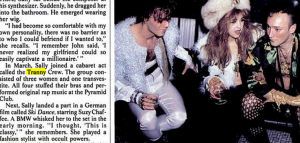



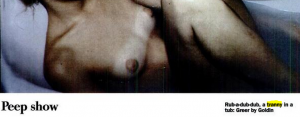

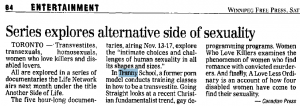
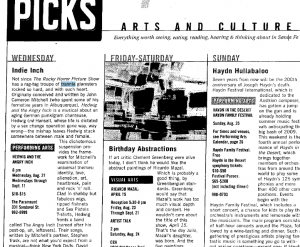


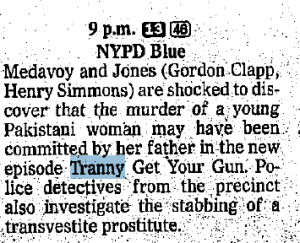
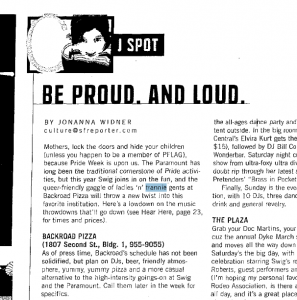
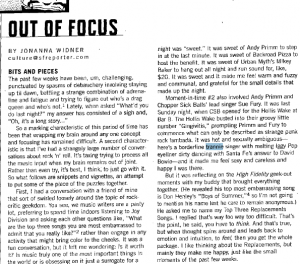
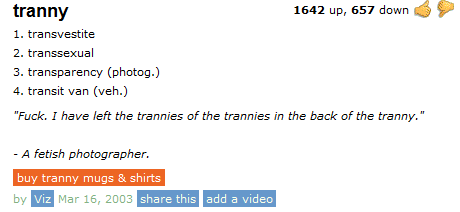
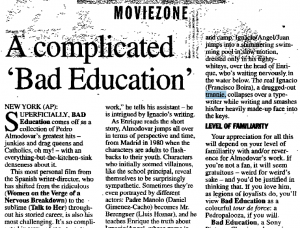


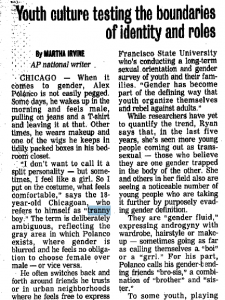
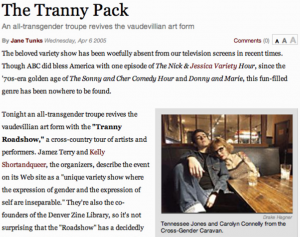
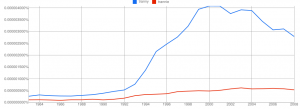


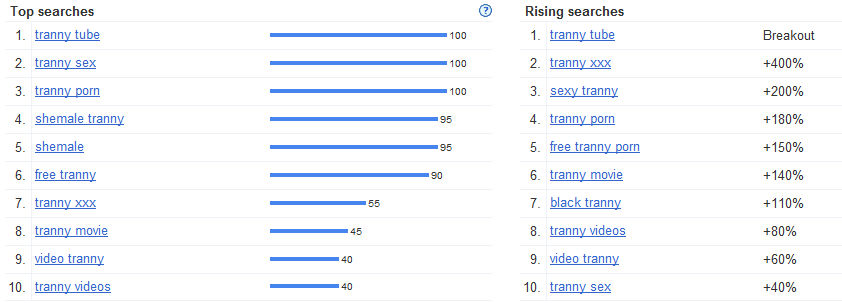


The trouble is evidence is hard to find of oral-histories. Whether it’s indigeneous peoples or street-culture if they weren’t getting as easilly published it’s harder to find the evidence. So the claims that it was an Australian Transgender communities self-defined term for themselves can’t be so easilly tested. Perhaps interviews of surviving people from the time period from Sydney could be done? After all if we did a similar search for the word Gay… how would it fare in the meaning and usage of mainstream society where the phrase ‘that’s so Gay’ is increasingly used and is clearly derogatory?
Perhaps you could give us a little “historical context” on other words that have become offensive. You could start with the “N” word. gee i wonder just what the reaction would be?
This is an excellent collection. It would be remiss not to mention the racial and generational implications.
HATE the word. It sounds cheap and demeaning and it is used to marginalize. For transsexual people it's similar to the word "f@g" for gay people. I tell people to simply not use it.
From the historical context there are also Vicky Lee’s annual “Tranny Guide”s, which she produced between 1993 and 2004 (from WayOut in London).
Maybe it’s a UK thing, but I don’t remember any problems with the title of Vicky’s books.
Or maybe it’s a contemporary thing; maybe people are more sensitive to the pejorative nature of the word now – in which case maybe there would be problems if she revived the book under the same title. I do recall that for the last volume she changed it to “Transgender AtoZ”.